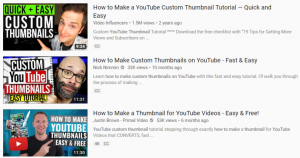
Without going too far into the weeds, I believe it’s fair to say that recruiting and matchmaking share much in common. Think about dating. We “date” all the time and that reaches beyond romantic relationships. Even before we solidify a friendship and draw that person into our confidence, we “date” them. Employment, like friendship and romance, is a relationship. It requires some level of dating. When any degree of intimacy is at stake, trust needs to be developed and compatibility tested. It’s no wonder that dating platforms have inspired job hunting apps to incorporate similar functionality. So why not capitalize on the best practices of matchmaking to enhance our recruiting efforts and create the perfect marriage between talent and employers?
Job Boards Are Beginning to Look Like Dating Apps
In 2005, according to Pew Research, few Americans knew about online dating. Today, close to half of the adult population has had some level of exposure to digital matchmaking. However, traditional websites are losing ground to mobile apps like Tinder. It’s also true that more job seekers are turning to mobile apps and social media to find work.
The convergence becomes strikingly obvious in the number of recruitment tools that mimic the functionality and philosophy of dating apps. Even the job board giants of old are conceding the battle. Monster recently announced that it’s purchasing Jobr, the so-called Tinder for jobs. Likewise, the big Australian job-site SEEK has infused $ 4 million in funding to Switch, another app patterned off of the dating platform model. And of course, eHarmony actually developed its own recruiting software.
The intriguing aspect of these developments isn’t that dating sites want to play “Hello, Dolly!” with a person’s career, it’s that job boards do.
The core tenet behind matchmaking is placing couples together based on compatibility. It’s about who people are, not what they want. And this mirrors the attitude of job seekers today. They are searching for the best cultural fit with an employer — a match founded on compatible visions, ideologies, and mission — rather than joining a company that merely satisfies a basic want, such as compensation. For recruiters, however, success requires more than utilizing the right technology. Finding the best talent is also an art that involves engagement, assessment, interaction, coaching and matching. Perhaps we can optimize our sourcing processes by following the wisdom of high-performing matchmakers.
Matchmakers Are Recruiters
Matchmaking, like recruiting, is a big industry. If you search the Web for matchmakers, you may be surprised to see hundreds of results, including rankings of the best firms in your area. There are powerful people behind the helms of these enterprises, many of them former executives of thriving corporations. That means they understand the mechanics of hiring and managing the right people. When you consider the analysis, vetting, psychology, coaching and emotional intelligence involved, you begin to see how matchmaking is just a different type of recruiting.
By following the advice of dating experts, let’s see how we can refine our sourcing process to identify the characteristics of high-potential candidates for our clients.
Confidence
Confidence in one’s ability and choices is a key attribute of attractiveness. It’s also the hallmark of highly sought-after talent. These professionals will not apply to every job posting — they focus on specific positions, companies, and business cultures. They promote a personal brand that demonstrates their grasp of the role and the hiring manager’s needs. They also showcase experiences that illustrate how they’ve solved similar challenges before. Look for enthusiastic and motivated talent who present backgrounds, skills, and aspirations that are clearly aligned to the specific position and client.
Sense of Humor
Relationships, personal and professional, require strong commitments. Employers and individuals want to find a partner who takes the relationship seriously. However, that doesn’t mean they want people who take themselves too seriously. The ability to laugh, share joys, acknowledge mistakes and bond is integral.
Being part of a team or couple isn’t always stress-free. Without a sense of humor to loosen things up, every relationship can succumb to crankiness, frustration and flared tempers. Emotional intelligence is crucial to the performance of a team. When searching for candidates, recruiters have a better chance of finding a great match in people who exhibit a sense of fun, cheer, and enjoyment. These are the workers who boost morale, sympathize with colleagues, appreciate diversity and unite teams.
Honesty and Dependability
Open, honest and reliable people enjoy healthy relationships. These behaviors are equally essential in the workplace. We count on our partners to help shoulder our burdens and support our goals. Without trust and dedication, no relationship can flourish. When these traits are absent in employees, managers know that they’ll never reach their business goals.
Look for candidates who can speak to their resumes in detail. Also, scrutinize resumes to ensure that the information seems reasonable. It’s easy to tell when a person is attempting to embellish skills or experiences. Check for supporting descriptions and achievements instead of obscure bullet points. Be alert for details that seem to mirror the exact language on the job posting. A truly valuable candidate knows his or her worth. Rather than making claims such as, “I have superior negotiation skills,” top talent will provide an example of how they used those skills.
These workers also know where they want to improve and may list additional skills or certifications they’re working toward. These are honest professionals with a desire to develop further. Employers can train for skills — it’s incredibly difficult to train for attitude.
“Family” Oriented
Relationship experts frequently point out that family oriented individuals make great mates. People who share close ties with their relatives tend to be respectful of others and integrate well with groups. You can also learn a lot about a person by how he or she treats parents, siblings, and cousins.
Cliché as it sounds, a working team becomes a family of sorts. We spend much of our time with colleagues. While every family member is unique, a workplace team brings a greater level of diversity and difference. Our business peers are less apt to share a common history, culture, race, ethnicity or background. When recruiting, look for a solid sense of team orientation and community in your candidates. Social media like Facebook and LinkedIn are excellent sources.
Check the composition of the candidate’s friends and colleagues lists. Are they diverse? Are they homogeneous? How does the candidate interact with others in posts and comments? Evaluating these criteria can give recruiters an immediate picture of how a prospective worker will integrate with the client’s business culture.
As Forbes contributor Liz Ryan notes in a recent article, “Sought-after job-seekers never forget their networks. They keep in touch with their friends, former colleagues, and other acquaintances, not just to get job leads but to help their friends with their issues, too.”
Matchmaking Is Also a Relationship
Matchmaking isn’t just about helping build a relationship between two parties. To succeed, matchmakers must form a close bond with their clients. The same rings true for elite recruiters. Determining a great fit between a client’s business culture and a potential worker requires that you know your candidate and nurture that relationship.
Savvy recruiters do more than vet the abilities, experience and qualifications of their candidates. They engage them, communicate with them and learn about them. Elon Musk relies on a fantastic interviewing technique where he poses pointed, situational questions: “When I interview someone, I ask them [to] tell me about the problems they worked on and how they solved them. If someone was really the person that solved it, they’ll be able to answer on multiple levels. They’ll be able to get down to brass tacks. And if they weren’t, they’ll get stuck. And then you go, ‘okay, this person is not really the one who solved it.’ Anyone who struggles hard on the problem gets it.”
Here are a few other questions that can generate meaningful dialogue and reveal more about the candidate.
- What are the characteristics exhibited by the best boss you have ever had – or wished that you have had?
- What are the positive aspects of your current job and work environment, or the last position you held before coming to this interview?
- What are the three to five expectations that you have of senior leaders in an organization where you will work successfully?
- When you work with a team, describe the role that you are most likely to play on the team.
- Tell me about an occasion when you believe that you delighted a customer, either an internal or an external customer.
- Describe a situation when you had to work alone and then when you had to work on a team? How did you accomplish your tasks in each situation? Which was easier? Why?
Recruiting today’s generation of talent is more a courtship than a resume ranking exercise. We don’t nurture productive relationships in our romantic lives by submitting a list of qualifications and negotiating terms; we seek those who share our visions and our passions. By borrowing some of the approaches used by proven matchmakers, we can do more than just fill positions — we can help forge a rewarding relationship between our talent and clients.
Business & Finance Articles on Business 2 Community(53)








